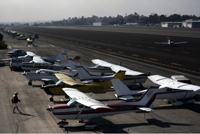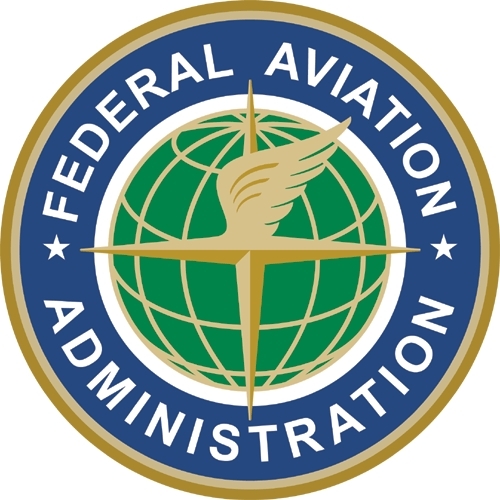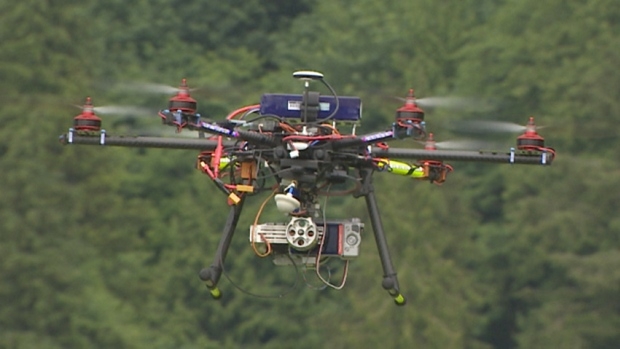Archive for February 2015
Pilot’s Bill of Rights 2 – Do your part
The bill below was introduced to both the house and Senate. Its called the Pilot’s Bill of Rights 2 and would allow pilots flying recreationally in a wide range of aircraft to no longer obtain a third class medical certificate. The new bill would allow private pilots to make noncommercial VFR and IFR flights in aircraft…
Read MorePilot's Bill of Rights 2 – Do your part
The bill below was introduced to both the house and Senate. Its called the Pilot’s Bill of Rights 2 and would allow pilots flying recreationally in a wide range of aircraft to no longer obtain a third class medical certificate. The new bill would allow private pilots to make noncommercial VFR and IFR flights in aircraft…
Read MoreSanta Monica Airport Commission Approves City Plan To Take Over KSMO
 (CalPilots Editor’s Note: Using the term “Airport Commission” is laughable when it comes to Santa Monica. In the spirit of the true airport commission, it is supposed to look after the airport and include actual aviation expertise, not real estate and other business interests such as the City of Santa Moncia populated it with) The Santa Monica Airport Commission showed its support for the city’s strategy to eventually shut down aviation operations at the airport, recommending this week that the city council move ahead with taking over chunks of the 227-acre field and imposing new rules for hangar owners and other users.
(CalPilots Editor’s Note: Using the term “Airport Commission” is laughable when it comes to Santa Monica. In the spirit of the true airport commission, it is supposed to look after the airport and include actual aviation expertise, not real estate and other business interests such as the City of Santa Moncia populated it with) The Santa Monica Airport Commission showed its support for the city’s strategy to eventually shut down aviation operations at the airport, recommending this week that the city council move ahead with taking over chunks of the 227-acre field and imposing new rules for hangar owners and other users.
Medical Reform Tops List Again In Pilot’s Bill Of Rights 2
 The Pilot’s Bill of Rights 2, which would broaden third-class medical exemptions and expand legal rights, began its journey through the legislative assembly line this week as GA Caucus members in the U.S. Senate and House introduced companion bills. Sen. Jim Inhofe, R-Okla., introduced S. 571 as an expansion of his legislation that was signed into law in 2012. Rep. Sam Graves, R-Mo., co-chair of the House GA Caucus, introduced the companion bill H.R. 1062. The medical reform is similar to the proposals introduced in 2013 and 2014. The bills would exempt private pilots from the third-class medical for VFR and IFR flights below 14,000 feet and up to 250 knots, in aircraft weighing up to 6,000 pounds with up to five passengers. In an effort to force the FAA to comply in a timely fashion, there is also a provision to allow pilots to fly under the new rules 180 days after enactment if the agency fails to update its policies.
The Pilot’s Bill of Rights 2, which would broaden third-class medical exemptions and expand legal rights, began its journey through the legislative assembly line this week as GA Caucus members in the U.S. Senate and House introduced companion bills. Sen. Jim Inhofe, R-Okla., introduced S. 571 as an expansion of his legislation that was signed into law in 2012. Rep. Sam Graves, R-Mo., co-chair of the House GA Caucus, introduced the companion bill H.R. 1062. The medical reform is similar to the proposals introduced in 2013 and 2014. The bills would exempt private pilots from the third-class medical for VFR and IFR flights below 14,000 feet and up to 250 knots, in aircraft weighing up to 6,000 pounds with up to five passengers. In an effort to force the FAA to comply in a timely fashion, there is also a provision to allow pilots to fly under the new rules 180 days after enactment if the agency fails to update its policies.
Medical Reform Tops List Again In Pilot's Bill Of Rights 2



Changes Coming to the Flight Service Program


For more information, including a Frequently Asked Question (FAQ) section, or to send comments, questions, and suggestions, please visit: http://www.faa.gov/go/flightservice.
Read MoreBob Hoover Documentary to Kick Off Museum Film Festival


SANTA MONICA, Calif. — The Museum of Flying will kick off of its Flying Film Festival Series with the Los Angeles premiere of the documentary, “Flying The Feathered Edge: The Bob Hoover Project.”
The premiere is slated for Friday, Feb. 20, at the Museum of Flying , which is located on the south side of Santa Monica Airport (SMO).
Read MoreSenator Feinstein Plans Legislation Regulating Recreational UAV Use


California Democratic Senator Dianne Feinstein is not satisfied with the proposed rules put forth by the FAA for small UAVs in the U.S. She says that small UAVs flown for recreational purposes should also be regulated.
Read MoreUpdated FAQ Available on Airman Testing
For the latest information on airman testing, check out the completely revamped frequently asked questions document available on the FAA’s Airman Testing page at www.faa.gov/training_testing/testing/ . The FAQs are presented in terms of three main topics: certification, training, and testing with easy-to-navigate hyperlinks. The Airman Testing page also includes a link to submit an airman…
Read MoreGA Study Shows $219 Billion Economic Impact In U.S.
General aviation supplied 1.1 million jobs and contributed $219 billion to the U.S. economy in 2013, according to a study (PDF) conducted for eight major GA groups. The General Aviation Manufacturers Association released the study Wednesday at its annual news conference in Washington. The study, conducted by PricewaterhouseCoopers, examined GA-related industries and their direct and indirect benefits to the economy, such as aircraft component makers selling parts and charter flight passengers spending money on hotels. It used the latest data available from 2013.
In state-by-state data, California had the highest total economic impact at $30.2 billion. The top 10 states ranked by total output attributable to GA in 2013 were California, Texas, Georgia, Florida, Illinois, Kansas, Arizona, Connecticut, Ohio, and New York. They accounted for 57 percent of the total output nationwide.
Read More





